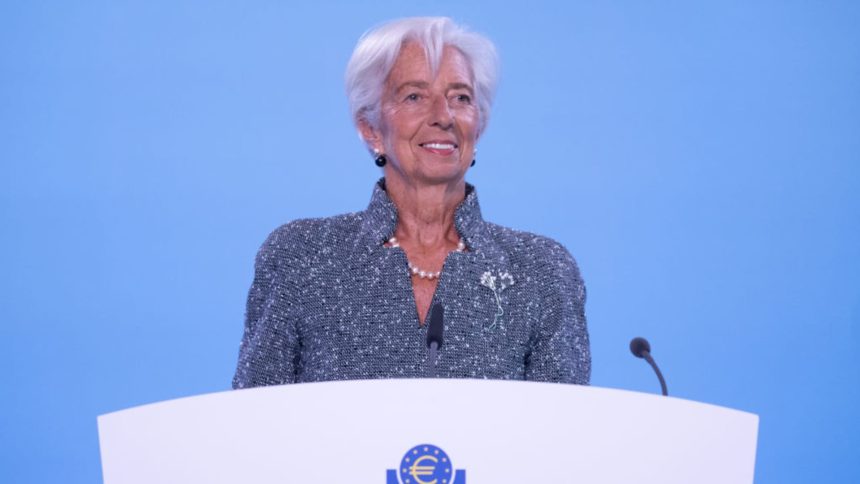The European Central Bank on Thursday cut its key interest rate to 3.25%, in its third quarter-percentage-point reduction of the year.
The move at the October meeting had been fully priced by markets after policymakers flagged reduced inflation risks and a weakening growth outlook.
In a statement following the decision, the ECB’s Governing Council called the process of disinflation “well on track” in its most optimistic statement in the current cycle.
“The inflation outlook is also affected by recent downside surprises in indicators of economic activity,” it said.
Headline price rises in the euro area eased to 1.8% in September, coming in below the central bank’s 2% target for the first time in three years.
The ECB once again forecast that inflation would “rise in the coming months, before declining to target in the course of next year.”
It is the first time the ECB has reduced rates at consecutive meetings since December 2011.
The ECB only debated a 25 basis point rate cut, rather than a larger 50 basis point cut, as opted for by the U.S. Federal Reserve in September, ECB President Christine Lagarde said during a Thursday press conference.
“It is a fact that the economic activity has come in — on the basis of the … indicators that are available — a bit lower than we anticipated,” Lagarde said, when asked by CNBC’s Annette Weisbach why it did not cut by a half-percentage point.
Expectations for a faster pace of monetary easing had built since the ECB’s Sept. 12 meeting, when market pricing suggested just one more rate cut this year, rather than the two priced in as of Thursday morning.
Along with the latest inflation print on Oct. 1, that shift in sentiment came amid dovish comments from various ECB members. ECB’s Lagarde also swayed markets when she said the latest data readings “strengthen our confidence that inflation will return to target in a timely manner.”
Another key factor has been the euro zone growth outlook. The ECB trimmed its euro zone growth forecast for 2024 last month on the back of weaker domestic demand, now projecting an 0.8% GDP rise, compared with 0.9% previously. Some of its biggest economies continue to face major challenges, including manufacturing weakness in Germany and a huge fiscal consolidation project looming in France; while sentiment indicators remain weak.
Read the full article here




